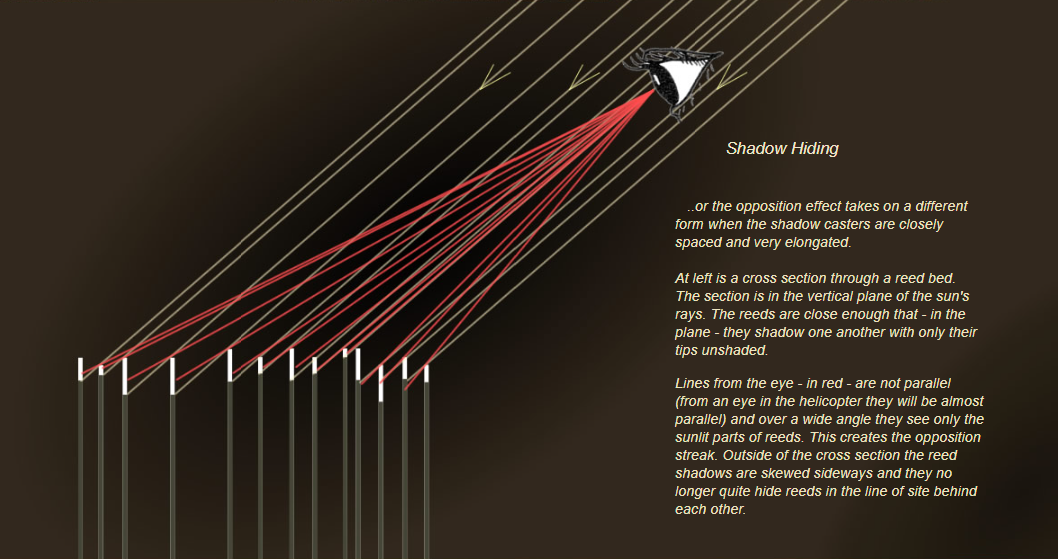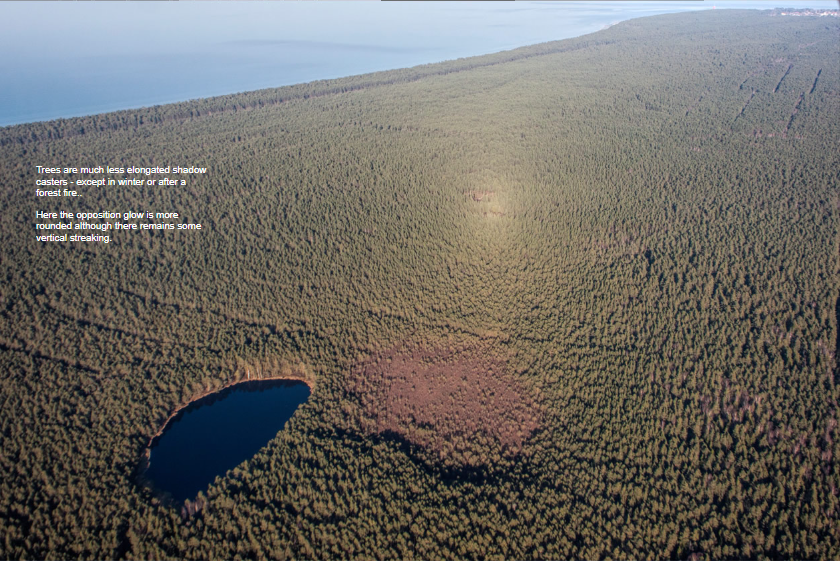XXXX - OPOD
The Opposition Effect: Exploring Different Forms
When it comes to atmospheric optics, the opposition effect is a fascinating phenomenon that can take on various forms depending on the conditions. In this article, we will delve deeper into the topic of the opposition effect and explore some interesting variations that have been observed.
The Vertical Opposition Effect Streak
One intriguing variation of the opposition effect was captured by Ivo Dinsbergs during a water bird counting survey around Lake Engure in Latvia. From a helicopter, Dinsbergs noticed a peculiar streak in the sky caused by the shadow of the helicopter casting onto a reed bed approximately 90 meters below. What made this observation unique was that the predominantly vertical reeds produced a vertical opposition effect streak instead of the usual round glow. This streak changed as the aircraft moved to different terrains, adding to the mystique of this optical phenomenon.
Shadow Hiding and Elongated Casters
Another form that the opposition effect can take on is known as "shadow hiding." This occurs when the shadow casters are closely spaced and very elongated, as seen in a cross section through a reed bed. In this case, the reeds are positioned closely enough that they shadow one another in the vertical plane of the sun's rays, with only their tips remaining unshaded. When viewed from certain angles, such as from an eye in a helicopter, the lines of sight see only the sunlit parts of the reeds, creating the opposition streak. However, outside of this specific cross section, the reed shadows become skewed sideways and no longer completely hide the reeds behind each other.
Trees: Rounded Glow with Vertical Streaking
While trees are generally less elongated shadow casters compared to reeds, they can still exhibit some interesting variations of the opposition effect. Typically, trees produce a more rounded glow with some vertical streaking. However, in winter or after a forest fire, when the trees lose their foliage and become more elongated, the opposition glow may also take on a more elongated appearance.
Conclusion
The opposition effect is a captivating atmospheric optics phenomenon that can manifest in different forms depending on the conditions. From the vertical opposition effect streak observed in Latvia to the shadow hiding effect caused by closely spaced and elongated shadow casters, there is much to explore and understand about this optical phenomenon. By studying and documenting these variations, we can deepen our knowledge of atmospheric optics and gain a greater appreciation for the wonders of our natural world.

Opposition Effect Streak, Latvia
Imaged by Ivo Dinsbergs from a helicopter during a water bird counting survey around Lake Engure. The helicopter shadow casts onto a reed bed ~90m below. The predominantly vertical reeds produce a vertical opposition effect streak rather than the customary round glow. The effect changes as the aircraft moves (see below) to different terrain.
All images ©Ivo Dinsbergs, shown with permission

Shadow Hiding
..or the opposition effect takes on a different form when the shadow casters are closely spaced and very elongated.
At left is a cross section through a reed bed. The section is in the vertical plane of the sun's rays. The reeds are close enough that - in the plane - they shadow one another with only their tips unshaded.
Lines from the eye - in red - are not parallel (from an eye in the helicopter they will be almost parallel) and over a wide angle they see only the sunlit parts of reeds. This creates the opposition streak. Outside of the cross section the reed shadows are skewed sideways and they no longer quite hide reeds in the line of site behind each other.

Trees are much less elongated shadow casters - except in winter or after a forest fire..
Here the opposition glow is more rounded although there remains some vertical streaking.

Note: this article has been automatically converted from the old site and may not appear as intended. You can find the original article here.
Reference Atmospheric Optics
If you use any of the definitions, information, or data presented on Atmospheric Optics, please copy the link or reference below to properly credit us as the reference source. Thank you!
-
<a href="https://atoptics.co.uk/blog/xxxx-opod-6/">XXXX - OPOD</a>
-
"XXXX - OPOD". Atmospheric Optics. Accessed on November 26, 2024. https://atoptics.co.uk/blog/xxxx-opod-6/.
-
"XXXX - OPOD". Atmospheric Optics, https://atoptics.co.uk/blog/xxxx-opod-6/. Accessed 26 November, 2024
-
XXXX - OPOD. Atmospheric Optics. Retrieved from https://atoptics.co.uk/blog/xxxx-opod-6/.